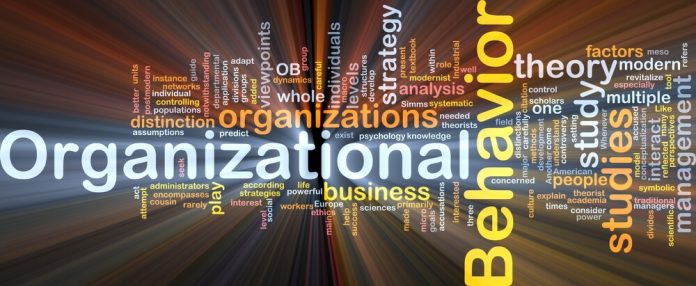
Numerous studies and surveys demonstrate that engaged employees positively impact transformation outcomes. Annual surveys by Gallup, however, show that employee engagement is often low (https://www.gallup.com/workplace/229424/employee-engagement.aspx).
Leadership development programs build resilient and agile leaders with the dexterity and conviction to create and communicate a motivating vision that engages employees to deliver value for their organizations. Organizational behavior perspectives include how employees think and act. Let’s explore the potential benefits of integrating elements of organizational behavior perspectives into leadership development programs to help sustain employee engagement during transformation.
Organizational Transformation
Transformation is ubiquitous, driven by promises to deliver sustainable value, such as
harnessing technology to provide exceptional customer experiences; improving financial performance, quality, and productivity; thwarting disruptive competitor propositions; delivering on ESG (environmental, social, and governance) value propositions; and strengthening stakeholder engagement.
Unlike change initiatives, which generally entail a limited number of discrete shifts, a transformation, according to Harvard Business Review, represents intersecting and integrated initiatives that reinvent the organization based on a vision of long-term value (https://hbr.org/2015/01/we-still-dont-know-the-difference-between-change-and-transformation). Given the scale, transformation carries a high risk of failing to deliver on expected benefits. According to McKinsey, up to 70 percent of transformations fail for various reasons, including a lack of employee engagement (https://www.mckinsey.com/featured-insights/mckinsey-explainers/what-is-business-transformation).
Measuring, Motivating, and Communicating
Organizational behavior (OB) focuses on how and why workers behave. This includes studies on worker vigor, resilience, dedication (e.g., hard work), and absorption. Other studies focus on the influence of the organizational context on engagement, including job security, autonomy, satisfaction, role clarity, feedback, and training (Kwon, K., & Park, J. (2019). The life cycle of employee engagement theory in HRD research. Advances in Developing Human Resources, 21(3), 352-370; Pouramini, Z., & Fayyazi, M. (2015). The relationship between positive organizational behavior with job satisfaction, organizational citizenship behavior, and employee engagement. International Business Research, 8(9), 57.). Given the many variables, we limit our focus to three OB-related interventions that have been shown to improve engagement in transformation settings: measurement, motivation, and communication.
1. Measurement
One challenge is measuring engagement. Part of the problem is the proliferation of differing definitions of employee engagement (Macey, W. H., & Schneider, B. (2008). The meaning of employee engagement. Industrial and organizational Psychology, 1(1), 3-30.). For instance:
- Conditions where employees give their best, are committed to organizational goals and values, and are motivated to contribute to organizational success with an enhanced sense of well-being (https://engageforsuccess.org/what-is-employee-engagement/#:~:text=Employee%20engagement%20is%20a%20workplace,of%20their%20own%20well%2Dbeing).
- People employ themselves physically, cognitively, and emotionally during role performances (Kahn, W. A. (1990). Psychological conditions of personal engagement and disengagement at work. Academy of Management Journal, 33, 692–724.).
- Adaptive role expansion beyond what is expected to promote organizational change (Macey, W. H., & Schneider, B. (2008). The meaning of employee engagement. Industrial and organizational Psychology, 1(1), 3-30.).
When measuring engagement, the definition deployed should be customized to the organization.
Another problem is ineffective measurement surveys and frameworks (https://www.quantumworkplace.com/future-of-work/how-to-handle-disengaged-employees). Several frameworks exist, including the following.
- J-DR Model
- Gallup Workplace Audit
- Utrecht Work Engagement Scale
- Work Cognition Inventory
- Employee Engagement Measure
Such frameworks should be customized to reflect the unique characteristics of the organization.
2. Motivation
Deloitte says, “If people are not significantly motivated to drive the transformation and participate in it, the effort is likely to wither on the vine” (https://www2.deloitte.com/content/dam/insights/us/articles/5124_Unleashing-motivation-for-transformation/DI_Unleashing-motivation-for-transformation.pdf). Studies have shown that leadership interventions can motivate engagement, including the following:
- Goal setting | task clarification
- Providing the resources for success (e.g., training)
- Autonomy: Employee empowerment (https://hbr.org/2021/10/forget-flexibility-your-employees-want-autonomy )
- Positive reinforcement: Personal, immediate, frequent (Geller, E. S.2003. Should Organizational Behavior Management expand its content?. Journal of Organizational Behavior Management, 22(2): 13–30.; Daniels, A. C. (2009). Oops!: 13 management practices that waste time and money (and what to do instead). Performance Management Publications.)
- Addressing cognitive biases: Examples include:
- Blind spot bias: Belief that transformation is unnecessary
- Optimism bias: Ignoring the risks of transformation failure
- Bystander effect: Others are responsible for the transformation
Behavioral economics (e.g., nudge thinking) can uncover ways to limit biases and cognitive limitations to drive enterprise value (https://www2.deloitte.com/us/en/insights/industry/public-sector/government-trends/2020/government-nudge-thinking.html).
3. Communication
According to BCG, “In all too many organizations, approaches to communication fail to truly engage employees and bring them along in the journey. As a result, companies leave employees on the sidelines and have difficulty winning their support. Because these sidelined employees are often the very individuals in charge of executing required ‘new ways of working,’ it’s no wonder that so many change efforts fall short.”
In addition to communicating the measurement and motivation interventions discussed previously, Mckinsey identified communication interventions that contribute to transformation success, including the following (https://www.mckinsey.com/capabilities/people-and-organizational-performance/our-insights/unlocking-success-in-digital-transformations):
- Frequently communicate a compelling change story and sense of urgency.
- Encourage employees to challenge old ways of working and experiment with new ideas.
- Encourage collaboration.
Transformational Leadership Development Considerations
Gartner reported that the average employee dealt with 10 organizational change initiatives in 2022, compared to two in 2016, and employees’ willingness to support change was 43 percent in 2022, compared to 74 percent in 2016 (https://hbr.org/2023/05/employees-are-losing-patience-with-change-initiatives).
Transformational leadership positively affects innovative work behavior (Sutardi, D., Nuryanti, Y., Kumoro, D. F. C., Mariyanah, S., & Agistiawati, E. (2022). Innovative work behavior: A strong combination of leadership, learning, and climate. International Journal of Social and Management Studies, 3(1), 290-301.). Transformational leadership programs emphasize transformation skills, inspiring employees to achieve change outcomes and ensuring employees are comfortable with change (https://www.imd.org/reflections/leadership-styles/). Developing transformational leadership skills, such as the following, may be beneficial (https://www.gartner.com/en/human-resources/glossary/transformational-leadership):
- Creating a shared vision that inspires employees and teams
- Fostering collaboration, innovation, mutual trust, and loyalty
- Involving employees in planning and decision-making
- Identifying and responding to change-fatigue
- Measuring, assessing, and evaluating employee engagement
- Coalition-building across diverse environments, and contexts
- Teambuilding and conflict management
- Persistent communication
- Integrating adaptive learning (e.g., organizing new knowledge) and transfer of learning into employee training programs
- Hiring needs assessment for new practices
- Coaching new ways of working
- Use of digital transformation tools
- Project management
- Use of behavioral economics (e.g., nudge thinking)
Transformational leadership development programs integrating relevant and practical organizational behavior perspectives, such as measurement, communication, and motivation strategies, can build resilient and agile leaders with the dexterity, courage, and conviction to create a resounding and appealing vision that engages employees in transformation settings.




